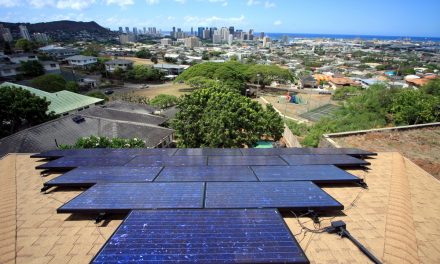Solar power panels for home use are really nothing new. In fact, you’d probably be hard pressed to find a neighborhood without any solar panels up on the rooftops. It makes a lot of sense in the sunny SoCal climate. You’re most likely well aware of all the benefits of solar powering your home such as lower carbon emissions and lower energy bills. But one thing you might not be up to snuff on is your knowledge of net metering. It’s been in effect in California since 2016 so while it’s not new new, it might be new to you. But what is it? How does it work? The devil’s in the details and we’re here to shine a light on them.
How Net Metering Works
Sooooooooooo, what is it? Like all things science, it’s technical and not the easiest to truly explain. But for simplicity’s sake, here’s the gist: net metering is when you connect your personal solar panel system up to the larger city-wide grid so that all the unused energy your system generates gets funneled into the big grid to power the community at large. At the end of every billing cycle, as a participant in net metering you get a credit for each kW of energy that you contributed to the grid. Actually quite surprised by that succinct lamens explanation.
One of the first things you learn about solar panels is that they are constantly running when the sun is out, converting sunlight into energy to power your home, storing excess energy for later when the sun isn’t out and you need power. If you’re smart with your energy usage in the home (keeping lights off during the daytime, unplugging electronics, etc.) you can create quite the surplus. Instead of saving it for a rainy day (because believe it or not, your solar panels still work when it’s raining, it literally has to be night time for them to clock out) you can opt in for net metering and supply the city with power and earn money back in the form of even lower, or sometimes negative bills. So you get money back. Pretty cut and dry incentive.
The Catch
Because there is always a catch. It’s a program regulated by the government, there are rules. In California specifically, we’re in version Net Metering 2.0 so there are some new things. For starters, the original net metering plan had a cap for utility companies and they were reaching that cap at rapid speed. So now, every new customer is automatically enrolled in Net Metering 2.0 These are the things you should anticipate.
Time Of Use Rates – There are times of the day when we use more or less energy. In those times, electricity is more or less expensive depending on demand. TOU rates match up your usage with the cost; so when your system contributes to the grid in a high demand time it earns the same amount of credit as it costs to use energy during that time. While the costs fluctuate, they fluctuate together with contribution vs. use.
Interconnection Fee – Don’t fret. It’s a one-time fee to connect your solar PV system to the grid. Each company has its own fee in each area, so check with your utility provider to determine your cost. It’s applied after your city inspector clears you for solar installation.
Non-Bypassable Charges – These are charges that are already built into your utility rates that go towards paying for programs such as funding energy efficiency and low-income customer assistance, to name a few. They’re per-kW hour charges that amount to two or three cents. It’s a newer part of the policy, but the charge is only applied to the energy contributed to the grid, not what you use for yourself. Think of it as a tiny little tax that goes towards helping the greater good.
Net Metering makes solar more economic in a variety of ways. This newer version capitalizes on the affordability it creates for customers, and provides funding to make its benefits far more reaching and accessible to all. If you’re looking for that extra push to convince you to go solar, this is it.



